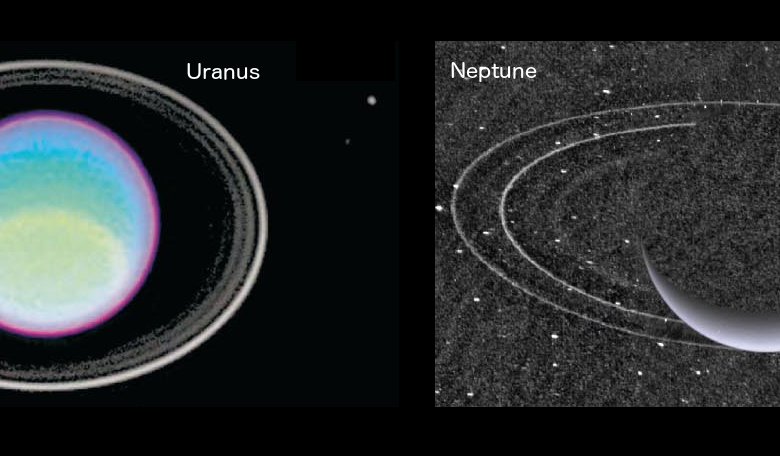How did Saturn get its rings? And why are the dark, rocky rings around Uranus and Neptune so strikingly different to the ice rings of Saturn? Hoping to settle the debate on the origin and variability of rings around giant planets are a team of astronomers from France and Japan, who have constructed a series of simulations to help work out the enigma of planetary ring formation.
The team, whose lead author on their recent research paper is Ryuki Hyodo from the Institut de Physique du Globe, Paris, constructed a number of models, known as smooth particle hydrodynamic (SPH) simulations to investigate what happens when a large object passes by a planet in a period when the evolving Solar System was in turmoil. This epoch in Solar System history occurred around 4.1 to 3.8 billion years (Ga) ago and is known as the Late Heavy Bombardment (LHB); a chaotic time when a disproportionately large number of asteroids are theorised to have collided with Mercury, Venus, Earth and Mars and when the giant gas planets underwent orbital migration, scattering objects in the asteroid and/or Kuiper Belts as they drifted about.
The theory behind the migration of the gas giants is known as the “Nice Model” – named after the location in Nice, France, where the model was initially developed – and according to the model, at the time of the LHB, giant planets could have experienced a significant number of close encounters with bodies scattered from the primordial Kuiper Belt.
In their simulations the team modelled how a close encounter of this kind resulted in the smaller body being torn apart by tidal forces. The team then looked at how much debris was left and what happened to it. The results show that for a big differentiated object (around the size of 1021 and 1023kg), that up to 10 per cent of the mass of the passing body is gravitationally captured around the planet.
Although these fragments would start out quite big, with each orbit around the planet, tidal forces would rip the chunks into smaller pieces. These high energy impacts are expected to be catastrophic enough to produce small particles and eventually, after a period of turbulence, the debris cloud would settle into a thin equatorial and low-eccentricity ring.
The riddle of how Saturn’s rings differ so much compared with that of its outlying neighbours was also solved, as the teams simulations showed that in the case of Uranus, if the passing body got too close it resulted in a more efficient capture of rocky material compared to Saturn’s case in which mostly ice is captured. The team concluded therefore that their results can naturally explain the compositional difference between the rings of Saturn, Uranus and Neptune along with how the rings got there in the first place.
For more information on this research, see http://arxiv.org/pdf/1609.02396.pdf











